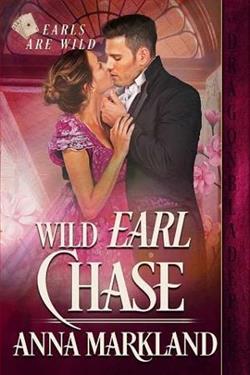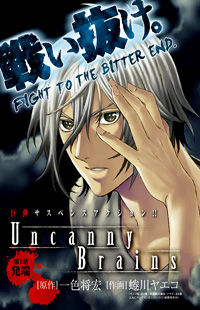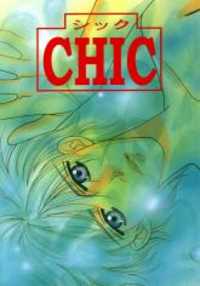Summary

Wild Earl Chase
by Anna Markland
A rakehell meets a crusading bluestocking. Sparks will fly.
Earl Griffith Halliwell is a rakehell with two passions—thoroughbred horse breeding and blondes. Lady Susan Crompton is a raven-haired, crusading bluestocking appalled by Halliwell's neglect of his impoverished tenants. Griff thinks members of the fair sex are useful only as mistresses.
Susan scorns all things masculine and resents the power men have over women. Sparks fly when they clash.
.
Read
Wild Earl Chase on http://kissnovel.net
Martial Peak Reviews
Wild Earl Chase by Anna Markland is a captivating historical romance that intertwines themes of social responsibility, gender dynamics, and personal transformation against the backdrop of 19th-century England. The novel introduces us to two compelling protagonists: Earl Griffith Halliwell, a notorious rakehell with a penchant for thoroughbred horse breeding and a cavalier attitude towards women, and Lady Susan Crompton, a determined bluestocking who is passionate about social reform and deeply concerned about the welfare of the impoverished tenants on Halliwell’s estate. Their initial clash sets the stage for a tumultuous relationship filled with tension, growth, and unexpected romance.
The narrative begins with a vivid portrayal of Earl Griffith Halliwell, whose character is steeped in privilege and indulgence. He embodies the archetype of the charming rogue, a man who has always viewed women as mere objects of desire rather than equals. Markland does an excellent job of illustrating Griff's flaws, particularly his dismissive attitude towards the plight of his tenants. This characterization not only makes him relatable but also sets the groundwork for his eventual transformation. Readers are drawn into his world, where the allure of wealth and status often overshadows moral responsibility.
In stark contrast, Lady Susan Crompton emerges as a beacon of strength and intellect. As a bluestocking, she challenges the societal norms of her time, advocating for the rights of women and the welfare of the less fortunate. Her character is a refreshing departure from the typical romantic heroine; she is not merely a love interest but a fully realized individual with her own ambitions and convictions. Markland skillfully crafts Susan's character, allowing her to embody the struggles of women in a patriarchal society while also showcasing her resilience and determination.
The chemistry between Griff and Susan is palpable from their first encounter. Their interactions are charged with tension, as Susan's scorn for Griff's lifestyle clashes with his nonchalant demeanor. This dynamic creates a fascinating push-and-pull throughout the narrative, as both characters are forced to confront their preconceived notions about each other and the roles they play in society. The dialogue is sharp and witty, reflecting their intellectual sparring and the underlying attraction that neither can ignore.
As the story unfolds, Markland delves deeper into the themes of social justice and gender equality. Susan's crusade against the neglect of the tenants serves as a catalyst for Griff's character development. Through their relationship, he begins to recognize the impact of his actions and the responsibilities that come with his title. This evolution is portrayed with nuance, as Griff grapples with his past and ultimately seeks redemption. Markland's exploration of these themes is both timely and timeless, resonating with contemporary readers who are still navigating similar issues today.
The pacing of the novel is well-balanced, with moments of tension interspersed with lighter, more humorous exchanges. Markland's writing style is engaging, drawing readers into the lush descriptions of the English countryside and the intricacies of high society. The vivid imagery enhances the reading experience, allowing one to fully immerse themselves in the world she has created. Additionally, the supporting characters are well-developed, adding depth to the story and providing further insight into the societal dynamics at play.
One of the standout aspects of Wild Earl Chase is its ability to challenge traditional gender roles while still delivering a satisfying romance. Markland does not shy away from addressing the complexities of love and power, illustrating how both Griff and Susan must navigate their desires and societal expectations. Their journey is not just about falling in love; it is about mutual respect, understanding, and the willingness to grow together.
In comparison to other historical romances, such as those by Julia Quinn or Lisa Kleypas, Markland's work stands out for its focus on social issues alongside romantic entanglements. While many authors in the genre often prioritize the romance itself, Markland weaves a narrative that emphasizes character growth and social consciousness. This makes Wild Earl Chase not only an entertaining read but also a thought-provoking one.
Overall, Wild Earl Chase is a delightful addition to the historical romance genre, offering readers a rich tapestry of characters and themes that resonate on multiple levels. Anna Markland has crafted a story that is both engaging and meaningful, inviting readers to reflect on the complexities of love, responsibility, and societal change. The sparks that fly between Griff and Susan are not just romantic; they symbolize the potential for transformation and the power of love to inspire change.
For those who enjoy a well-rounded romance with strong character development and relevant themes, Wild Earl Chase is a must-read. It is a testament to the enduring power of love and the importance of standing up for what is right, making it a compelling choice for anyone looking to lose themselves in a beautifully written story.
























Reviews 0
Post a Reviews: